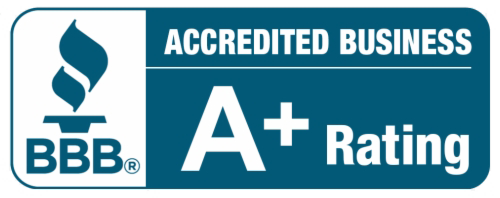What Storms Do To Commercial Roofs
How Wind Uplift And Debris Compromise Roof Membranes Without Tearing Them
When a powerful storm hits, the effects on a commercial roof can be both immediate and invisible. Most people expect to see torn shingles or scattered debris, but the truth is, much of the real damage happens beneath the surface. Wind, rain, and fluctuating air pressure can all work together to create weaknesses that aren’t obvious right away.
Heavy gusts can lift previously secured materials just enough to let water slip underneath, starting a slow infiltration that spreads through insulation layers and underlayment. Once moisture gets in, it doesn’t stay put—it travels. Over time, it saturates materials that were never meant to hold water, which can cause swelling, rot, or corrosion. Even a home that looks perfectly fine from the ground might already be struggling internally after a storm.
What makes this type of damage tricky is that it often takes months for visible signs to appear. Stains on ceilings, musty smells, or uneven temperatures inside the building can all trace back to one windy night or a single stretch of heavy rain. By the time the symptoms show up, the problem beneath the surface may have spread far enough to require significant repair work.
Why Storm Damage Is Often Invisible
The outermost layer of a commercial roof—whether it’s metal, membrane, or built-up asphalt—is designed to withstand punishment. It’s meant to take the brunt of hail, heat, and rain, so after a storm, it’s easy to assume that if the surface looks intact, everything’s fine. The truth is that water and pressure don’t always leave obvious marks.
Hail, for example, can compress insulation or puncture the waterproofing layer underneath without leaving a noticeable dent on top. Wind can peel or slightly loosen seams between panels or membranes. Even a small gap can allow rain to seep inside, where it’s absorbed by insulation or decking. Once moisture enters these internal layers, it’s trapped. It doesn’t evaporate quickly, especially in a system that’s sealed for energy efficiency.
Over time, this trapped moisture creates the perfect environment for mold growth and material degradation. Adhesives that hold membranes in place can weaken. Metal fasteners may begin to rust. In some cases, structural components that support the roof can start to deteriorate, which compromises the entire system’s performance. Yet from the outside, the home’s exterior can appear untouched.
That’s why post-storm inspections are critical. It’s not just about cleaning up debris—it’s about uncovering what the storm left behind that can’t be seen. Without professional evaluation, small hidden issues can slowly become major structural concerns.
How Different Storms Cause Different Problems
Not all storms affect roofs in the same way. Wind, hail, rain, and snow each have their own brand of destruction, and commercial roofs respond differently depending on their design and materials.
High winds create pressure variations across a roof’s surface. These forces can lift edges or loosen flashing, allowing water to enter at vulnerable joints. In areas where the the membrane membrane is adhered rather than mechanically fastened, uplift pressure can separate layers, leading to air pockets and gaps that expand over time.
Hailstorms bring another kind of trouble. Even small hailstones can impact the structure of the home with enough force to bruise underlying insulation or fracture the membrane. The top surface might not show a mark, but microscopic cracks or compression spots underneath can collect moisture the next time it rains. Once that water freezes and expands, those tiny imperfections grow.
Heavy rain is often underestimated, but it’s one of the most common culprits behind this type of deterioration. Prolonged downpours can overwhelm drainage systems, causing water to pool in low areas. Standing water puts additional stress on the structure and increases the chance of leaks. If the roof has already experienced minor membrane damage, pooling accelerates infiltration dramatically.
Even winter storms play a role. Ice can form along edges and drains, creating blockages that push meltwater back toward seams and penetrations. The freeze-thaw cycle expands trapped moisture, widening cracks with every temperature shift. These gradual changes weaken the entire system from within.
The Long-Term Cost Of Ignoring Storm Damage
When storm damage goes unnoticed or untreated, it doesn’t stay contained. Moisture inside insulation can spread horizontally, affecting larger sections of the roof than the original entry point. The longer it stays, the more the materials break down. Eventually, energy efficiency drops, interior humidity rises, and heating and cooling costs climb.
For many property owners, the first noticeable problem is often inside the building. Ceiling stains, peeling paint, or damp drywall usually point to damage that began months earlier. By that point, what might have been a simple repair could have turned into a partial replacement. That’s why the most expensive storm damage isn’t necessarily the most dramatic—it’s the kind that sneaks in quietly.
Beyond the structure itself, hidden roof damage can disrupt business operations. A sudden leak during a later storm could lead to downtime or loss of equipment. Electrical systems near the roofline are especially vulnerable once moisture finds its way in. Because commercial roofs are large and complex, even a small amount of trapped water can cause widespread issues over time.
A professional inspection after a major weather event helps identify these problems early. Specialists use tools like infrared scanning or moisture meters to locate trapped water beneath the surface. Catching it before it spreads not only protects the building but also extends the life of the roof—often saving thousands of dollars in future repairs.
Protecting Your Investment After The Storm
Storms can leave behind more than what meets the eye. While a commercial roof might appear untouched, its hidden layers could tell a different story—one of moisture intrusion, weakened insulation, or structural strain waiting to worsen. The smartest move after severe weather is to have the roof inspected by professionals who understand how to uncover these less obvious signs of damage.
At Supreme Roofing Systems, we’ve seen firsthand how subtle storm effects can escalate if they’re ignored. Our team uses proven diagnostic methods to assess the full condition of a roof, inside and out. If your building has recently endured heavy rain, high winds, or hail, we encourage you to reach out for a thorough evaluation.
Don’t wait for leaks or visible wear to appear.
Contact Supreme Roofing Systems today to schedule an inspection and ensure your commercial roof remains strong and reliable, no matter what the next storm brings.

